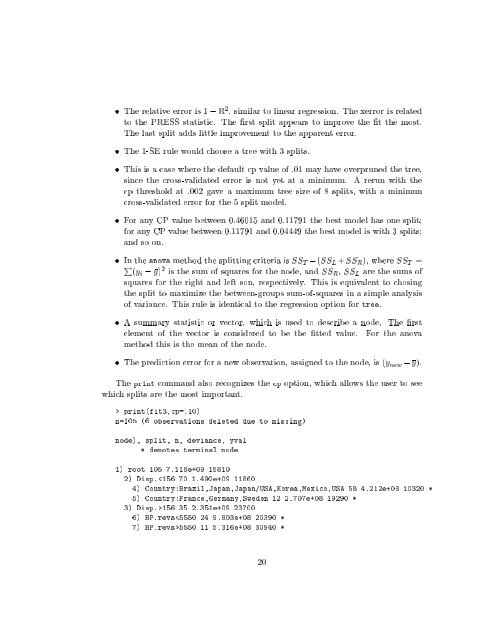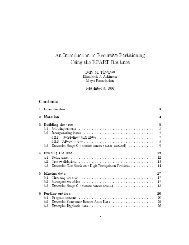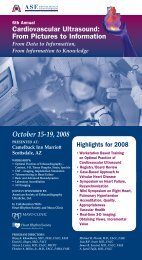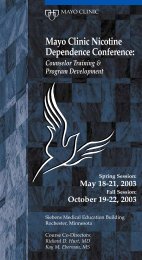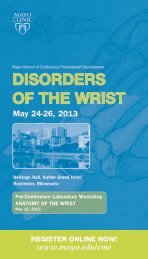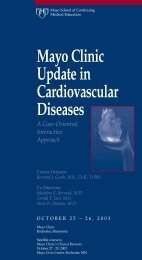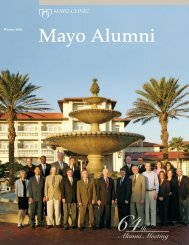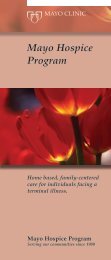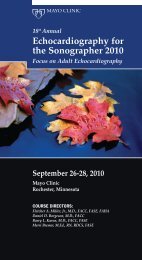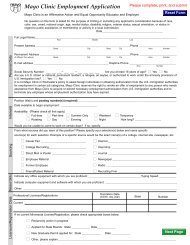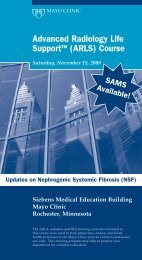An Introduction to Recursive Partitioning Using the RPART Routines ...
An Introduction to Recursive Partitioning Using the RPART Routines ...
An Introduction to Recursive Partitioning Using the RPART Routines ...
You also want an ePaper? Increase the reach of your titles
YUMPU automatically turns print PDFs into web optimized ePapers that Google loves.
The relative error is 1 ; R 2 , similar <strong>to</strong> linear regression. The xerror is related<br />
<strong>to</strong> <strong>the</strong> PRESS statistic. The rst split appears <strong>to</strong> improve <strong>the</strong> t <strong>the</strong> most.<br />
The last split adds little improvement <strong>to</strong> <strong>the</strong> apparent error.<br />
The 1-SE rule would choose a tree with 3 splits.<br />
This is a case where <strong>the</strong> default cp value of .01 may have overpruned <strong>the</strong> tree,<br />
since <strong>the</strong> cross-validated error is not yet at a minimum. A rerun with <strong>the</strong><br />
cp threshold at .002 gave a maximum tree size of 8 splits, with a minimun<br />
cross-validated error for <strong>the</strong> 5 split model.<br />
For any CPvalue between 0.46015 and 0.11791 <strong>the</strong> best model has one split<br />
for any CPvalue between 0.11791 and 0.04449 <strong>the</strong> best model is with 3 splits<br />
and so on.<br />
In <strong>the</strong> anova method <strong>the</strong> splitting criteria is SS T ;(SS L + SS R ), where SS T =<br />
P<br />
(yi ; y) 2<br />
is <strong>the</strong> sum of squares for <strong>the</strong> node, and SS R , SS L are <strong>the</strong> sums of<br />
squares for <strong>the</strong> right and left son, respectively. This is equivalent <strong>to</strong> chosing<br />
<strong>the</strong> split <strong>to</strong> maximize <strong>the</strong> between-groups sum-of-squares in a simple analysis<br />
of variance. This rule is identical <strong>to</strong> <strong>the</strong> regression option for tree.<br />
A summary statistic or vec<strong>to</strong>r, which is used <strong>to</strong> describe a node. The rst<br />
element of <strong>the</strong> vec<strong>to</strong>r is considered <strong>to</strong> be <strong>the</strong> tted value. For <strong>the</strong> anova<br />
method this is <strong>the</strong> mean of <strong>the</strong> node.<br />
The prediction error for a new observation, assigned <strong>to</strong> <strong>the</strong> node, is (y new ; y).<br />
The print command also recognizes <strong>the</strong> cp option, which allows <strong>the</strong> user <strong>to</strong> see<br />
which splits are <strong>the</strong> most important.<br />
> print(fit3,cp=.10)<br />
n=105 (6 observations deleted due <strong>to</strong> missing)<br />
node), split, n, deviance, yval<br />
* denotes terminal node<br />
1) root 105 7.118e+09 15810<br />
2) Disp.156 35 2.351e+09 23700<br />
6) HP.revs5550 11 5.316e+08 30940 *<br />
20


